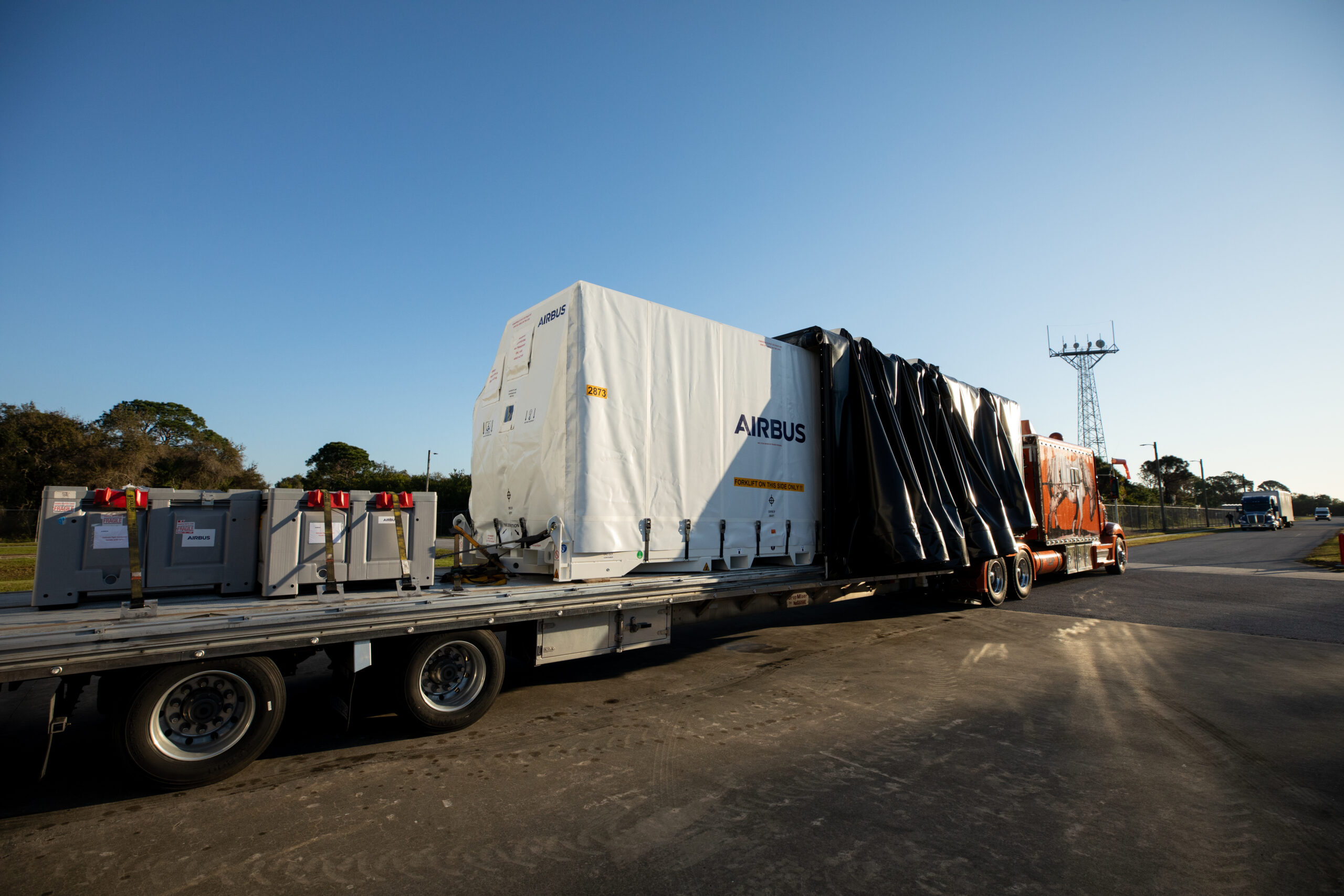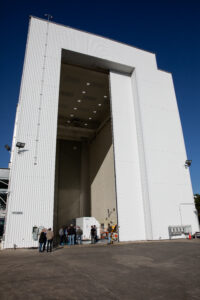
NASA’s mission to study Jupiter’s icy moon Europa completed another milestone as power supply hardware for the Europa Clipper spacecraft arrived on Wednesday, Feb. 21, at the agency’s Kennedy Space Center in Florida.
Workers unloaded the five-panel solar arrays at the Payload Hazardous Servicing Facility. The solar arrays will attach to the spacecraft to power it on the 1.8-billion-mile journey to Europa. Strong evidence shows an ocean beneath Europa’s crust that is twice the volume of all the Earth’s oceans combined, and scientists want to determine if any areas can support life.

The solar array travelled by air from Leiden, Netherlands, where Airbus workers assembled them over the last year. Once at the Port of Miami in Florida, a truck transported the arrays to Kennedy.
The two solar arrays will collect enough sunlight for the spacecraft’s power needs as it operates in the Jupiter system, which is more than five times as far from the Sun as Earth. Each solar array is 46.5 feet long. With its solar arrays deployed, Europa Clipper spans more than 100 feet (about 30.5 meters), or about the length of a basketball court.
The spacecraft will perform dozens of close flybys of Europa to gather measurements of the internal ocean, map the surface composition and geology, and hunt for plumes of water vapor that might be venting from the icy crust.
Europa Clipper is the largest spacecraft NASA has ever developed for a planetary mission. It has nine dedicated science instruments, and the spacecraft’s electronics are enclosed in a vault made from aluminum-zinc alloy to protect them from intense radiation of Jupiter.
Europa Clipper is being assembled at NASA’s Jet Propulsion Lab (JPL) in Southern California and will travel to Kennedy early this summer. Launch is targeted for October 2024 aboard a SpaceX Falcon Heavy rocket from Launch Complex 39A, with a planned arrival at Jupiter in April 2030. NASA’s Launch Services Program, based at Kennedy, is managing the launch service.
